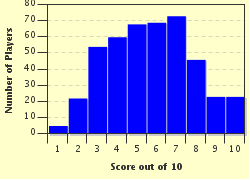Quiz Answer Key and Fun Facts
1. Where, in the human body, is the liver?
2. Most of the functions of the liver are carried out by one type of cell (making up the greater part of liver tissue). What are these liver cells called?
3. The main liver cells are arranged in chains, or cords, forming lobules around a central vein. What is the name of this central vein?
4. The liver secretes bile, containing bile salts, into the small intestine. What is the function of the bile salts?
5. Bile contains bile pigments. What is the significance of the bile pigments?
6. The liver stores excess carbohydrate as polysaccharide. What is the name of this polysaccharide energy store?
7. The liver is able to convert excess amino-acids (from protein in the diet) into carbohydrate. What is the waste product of this process?
8. Which of these vitamins is NOT normally stored in large amounts in the liver?
9. What is unusual about the blood supply to the liver?
10. The liver removes alcohol (ethanol) from the blood, and metabolises it. What is produced from the metabolised ethanol?
Source: Author
jamesf
This quiz was reviewed by FunTrivia editor
crisw before going online.
Any errors found in FunTrivia content are routinely corrected through our feedback system.

